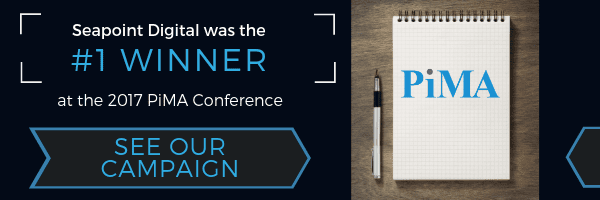If you are a director of an insurance trust or an affinity insurance group and you want to expand your digital footprint, we understand you. Your goal is to target prospective members of your parent organization in an effective way, through pay-per-click advertising (PPC) and other digital advertising, but you face unique challenges that other traditional insurance agencies do not need to overcome. To face these challenges head-on and succeed, your mission is twofold.
You must:
- Acknowledge the advantage that you likely already have: increased data and insights about your prospects.
- Leverage your advantage by implementing creative strategies that target your audience with powerful, customized messaging.
With that in mind, here are a few paid advertising tactics to consider.
Search and Display-Based Ads for Affinity Insurance Groups
Perhaps your affinity insurance group
is hesitant to explore the option of PPC advertising. After all, your audience is very limited; why pay for broadcasting a message to those who aren’t eligible to purchase your insurance product? But you can succeed with search-based and display-based ads. You can reach your specific audience, and limit the number of clicks from ineligible leads. To run a successful search-based campaign, consider these three tactics in order to help improve your effectiveness.

Be selective with targeting. Keywords are powerful, but you must use them correctly to get the results you want. Using keywords that are phrase-matched and exact-matched reduce the likelihood of off-topic keywords triggering your ad search ads.
For example, suppose you are trying to target teachers in your state association to see an ad for life insurance. To be effective, add words like “educator” or “teacher” in your keywords, combined with the product offered to reach the desired demographic and match their intent. The final phrase-matched keyword would look something like “educator life insurance” which would be encased in parenthesis as shown. Using phrase-matched keywords allows Google to serve ads to users who make searches containing similar words in the search. An example of searches that would be included are “teacher life insurance” or ”life insurance for educators”. In addition to phrase-matched keywords, exact-matched keywords can give your strategy the edge that it needs. Using this kind of keyword match type allows for your ad to appear exclusively for the keywords you select when encased in brackets. In this example your ads would only show when a search is made for [educator life insurance] or other exact-matched keywords added to the account.
Also, consider targeting your parent organization’s branded keywords to raise awareness of offers that are available to members. As your campaign progresses, review analytics, and utilize negative keywords and actual search term data to continue to refine your keyword list.
Write clear ad copy. Where appropriate in your search-based ads, make sure to include your connection to your parent organization as prominently as possible. This will immediately create in your prospect a sense of familiarity with your brand, establish a sense of trust, and show that you can specialize services to fit their interests. This is also a highly effective way to help limit clicks from ineligible customers.
Utilize Audience and Demographic Data. Until recently, the most powerful tool that Google Ads had for association marketing was their customer match feature. Association or affinity insurance groups had the ability to upload member lists from their CRM and target directly to those identified emails. Unfortunately, Google recently made a policy change where these features are only available to accounts with (1) a lifetime spend of over $50,000, (2) an account at least 90 days old and (3) a personal account manager at Google. At this time, these features are now inaccessible for many advertisers.
But all is not lost. Insurance groups can still use retargeting ads. By sharing analytic data from their parent organization, insurance trusts can effectively educate members and reinforce product-specific messaging to those who already have an awareness of your insurance products. It is also valuable for association insurance groups to be selective with demographics. For instance, a professional association will likely have success in removing the 18-24 year old demographic, and possibly those over age 65.
Video Ads for Affinity Insurance Groups
If you were to guess, what would you say is the second most-used search engine in the United States? Bing? DuckDuckGo? Many are surprised at the answer: it’s actually YouTube.*

Since YouTube is owned by Google, you can target YouTube channels and keywords with Google display ads. Beyond display ads, video ads on YouTube can be an effective tool in reaching your audience.
One of the biggest challenges that association insurance agencies experience is the lack of personal connection that their target audience feels toward them. By using video ads on YouTube, affinity insurance groups can utilize retargeting lists, segment them by product pages, then speak directly to their prospects. You can reinforce your position as an organization that is uniquely qualified to meet their needs or take the opportunity to continue educating them about the particular insurance product they should see.
Successful Marketing for Affinity Insurance
If you want to run a PPC campaign that works for your affinity insurance group, Seapoint Digital can help you. We have experience in creating and implementing powerful digital marketing campaigns that get stunning result.
*https://www.searchenginejournal.com/seo-101/meet-search-engines/#close

